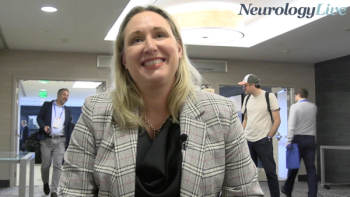
Omaveloxolone Shows Promise in Friedreich's Ataxia
Results of a phase 2 trial in patients with Friedreich’s ataxia leaves hope for the future, with regulatory submission on the agenda.
Ronald Bartek, MA
Top-line results from Reata Pharmaceutical’s phase 2 MOXIe trial in patients with Friedreich’s ataxia (FA), a rare degenerative neuromuscular disorder, showed a 2.40-point improvement in Friedreich’s Ataxia Rating Scale (mFARS) score in patients treated with omaveloxolone compared to patients who received placebo. Based on the findings, Reata intends to file the drug for approval with the FDA. If approved, it would be the first treatment to directly combat the effects of FA.
The 2-part study, which is the largest global interventional trial ever conducted in FA, is a randomized, placebo-controlled, double-blind study conducted over 48 weeks (NCT02255435). Part 2 includes 103 patients with FA who were assigned 1:1 to either 150 mg omaveloxolone or placebo. The primary end point was change in mFARS, a physician-assessed measurement that focuses on performance of activities such as speaking and swallowing, upper limb coordination, lower limb coordination, and standing and walking.
Patients included adults with FA between the ages of 16 to 40. Participants were allowed to remain active during the trial as long as they continued a consistent exercise regimen. Exclusion criteria included a diagnosis of diabetes, family history of heart disease, drug or alcohol abuse, and previous participation in other omaveloxolone trials.
Notably, the primary analysis population included 82 patients without pes cavus, a musculoskeletal foot deformity that potentially hinders the ability to complete the mFARS exam to the fullest, while the safety analysis included the entire randomized population (n = 103).
Overall, those who were treated with omaveloxolone experienced a statistically significant improvement in mFARS (P =.014). A mean improvement of -1.55 points in mFARS score from baseline was recorded in the treatment group, while patients treated with placebo experienced a mean worsening of +0.85 points. When patients with pes cavus were included in the analysis (n = 103), a statistically significant mean 1.93-point improvement on mFARS was recorded compared with placebo (P =.034).
The study drug was well tolerated throughout the 48 weeks, with 4 patients (8%) in the treatment group and 2 (4%) patients in the placebo group discontinuing the study due to an adverse event (AE). Common AEs experienced in around 20% of patients were headache, nausea, fatigue, increased aminotransferases and abdominal pain; 3 patients experienced serious adverse events (SAEs) during the trial.
The improvements seen in patients treated with omaveloxolone supports efforts to submit the drug for approval from the FDA.
“The results of MOXIe represent a truly historic moment for the patients, families, and caregivers that comprise the Friedreich’s ataxia community,” said Ronald Bartek, president of the Friedreich’s Ataxia Research Alliance, in a statement. “We believe the findings announced today bring us closer to our goal of providing an urgently needed therapy to patients with FA.”
REFERENCE
Raeta Announces Positive Topline Results from the MOXIe Registrational Trial of Omaveloxolone ir Patients with Friedreich’s Ataxia [news release]. Irving, TX: Raeta Pharmaceuticals. October 14, 2019. reatapharma.com/press-releases/reata-announces-positive-topline-results-from-the-moxie-registrational-trial-of-omaveloxolone-in-patients-with-friedreichs-ataxia/?releaseyear=2019. Accessed October 15, 2019.
Newsletter
Keep your finger on the pulse of neurology—subscribe to NeurologyLive for expert interviews, new data, and breakthrough treatment updates.




































